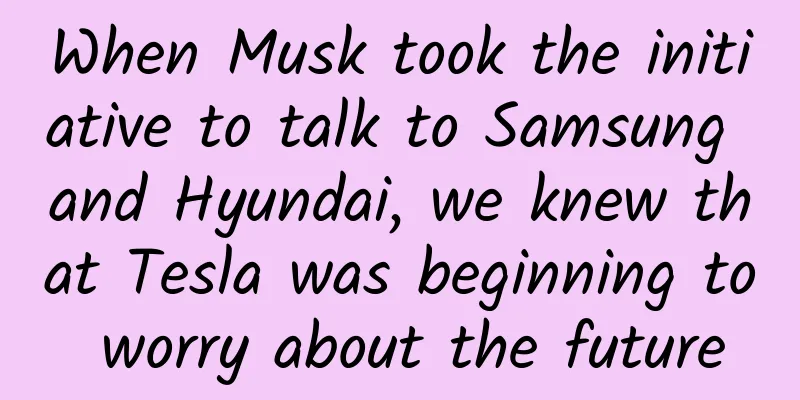Google self-driving cars crashed three times last month, but careless drivers are more dangerous

|
Several foreign media reported three traffic accidents involving Google's self-driving cars in Chandler, Arizona last month, pointing out that careless drivers may be more dangerous than weather and technical problems. The following is the original content: One of the incidents is believed to be the first time a drunk driver has hit one of Google's test vehicles, a Lexus sport-utility vehicle. Google's parent company Alphabet said two of the accidents occurred when drivers were behind the wheel of a Google car, and in the third, the Google car was rear-ended by a vehicle in autonomous driving mode. Google has expanded its self-driving car program to Arizona, where it began mapping the city of Chandler this year and began autonomous testing in the city in August. These Lexus RX450hs attempt to drive autonomously on the streets, with a Google employee ready to take over when necessary. There is usually a second employee sitting in the car to record how the vehicle reacts to road conditions. The company has 24 Lexuses, though it won't say how many are driving in Chandler or whether the accident rate there is higher or lower than in other test cities, such as Mountain View, Austin, and Kirkland, Wash. The company also has 34 prototypes on the road. Careless drivers are often more dangerous Google managers said they wanted to test the vehicle in a new environment to see how it reacts to dust storms and golf course crossings. Chandler, with its tech industry dominated by Intel, fits well with Google's testing plans. But the experience of these vehicles shows that careless drivers are often more dangerous than weather or flaws in self-driving technology. That appears to be the case with the August 16 accident, in which the driver of a Google car was doing manual driving at 42 mph when it was rear-ended by a vehicle going 67 mph. Chandler police spokesman Daniel Mejia said the driver, 25, was arrested on suspicion of drunk driving. According to police reports, one person in the Google car was treated for a concussion. Mothers Against Drunk Driving, an anti-drunk driving group, said the Chandler accident showed why the group supported self-driving cars. As of August 31, Google cars have driven 1.9 million miles in autonomous mode and another 1.2 million miles in human-driven mode. The company's goal is to eventually launch a fully autonomous vehicle with no human controls to provide transportation for people who can't or don't want to drive. So far, Google has only caused one accident in self-driving mode, a collision in California this year when the self-driving car was trying to merge into the left lane ahead to avoid sandbags on the road ahead and ended up colliding with a bus. Accidents caused by other drivers are more common. A controversial incident There was a dispute over the Aug. 9 collision in Chandler. The Google driver was found to be at fault, but the company said data showed the other driver ran a red light. The Google driver was traveling west on Chandler Avenue and attempted to turn left at a traffic light. After the traffic light turned red, the Google driver manually steered the vehicle to start a left turn. Google data showed that another car traveling east ran the red light at 45 mph, causing the vehicles to collide. No one was injured in the accident. A Chandler police officer responded to the accident and heard from the driver of the other vehicle, who told the officer that the light was yellow when they entered the intersection and the Google car turned, causing the accident. According to this account, the Google driver was cited for failing to yield the right of way and received a citation. "Case closed," said the report released by Officer Bradley Frye. However, Google said that their vehicles are equipped with radar, cameras and lidar devices (which can use lasers to measure distance), and vehicle data shows that the red light was on when the other driver was 100 feet away from the stop line, but they still continued to drive. Google's report said the Google car was traveling at 2 mph and the other car was traveling at 45 mph at the time of the accident. Lauren Baril, a spokeswoman for the Google project, said the accident could have been avoided if the Google car had switched to autonomous driving mode at the time. "The most useful feature of our system is the ability to go back and see what would have happened if the car was in autonomous mode," she said. "If it was autonomous, our software would have predicted that the car was going to enter the intersection after the light turned red. Because it was going so fast, our car would have moved out of the way until it passed the intersection." On August 22, another Google Lexus was rear-ended by another vehicle while driving in autonomous mode. No one was injured in that accident. There were two other rear-end collisions involving Google cars in California in August, one of which was in manual mode and the other in autonomous mode. "Every day, there are tens of thousands of crashes on American roads, and nearly all of them involve human error," Baril said. "We are developing fully autonomous driving technology because we want to make roads safer by removing human error entirely from the road. Our self-driving cars are never distracted, intoxicated, or tired. They can often see more and react more appropriately than a human driver." So far, self-driving cars do have a better safety record than most: data from 2010 showed 5.4 million crashes in the U.S., resulting in 32,999 deaths. Of course, it’s too early to say that self-driving cars will definitely be safer when they’re used on a large scale. As a winner of Toutiao's Qingyun Plan and Baijiahao's Bai+ Plan, the 2019 Baidu Digital Author of the Year, the Baijiahao's Most Popular Author in the Technology Field, the 2019 Sogou Technology and Culture Author, and the 2021 Baijiahao Quarterly Influential Creator, he has won many awards, including the 2013 Sohu Best Industry Media Person, the 2015 China New Media Entrepreneurship Competition Beijing Third Place, the 2015 Guangmang Experience Award, the 2015 China New Media Entrepreneurship Competition Finals Third Place, and the 2018 Baidu Dynamic Annual Powerful Celebrity. |
<<: Farewell BlackBerry: Why the former mobile phone giant repeated Nokia's mistakes
>>: 105-year-old IBM is overwhelmed by reform. Can artificial intelligence save it?
Recommend
It’s not that I can’t afford a down jacket, but are military coats really more cost-effective?
Winter is here, and the temperature drops sharply...
Imitation Qiushibaike Android client source code
Functional category: Social Supported platforms: ...
Behind the strong push of TVOS operating system by radio and television: facing resistance from Android
Imagine if everyone’s brain had the same configur...
Is grapefruit poisonous? The love-hate relationship between grapefruit and drugs
This is the 3656th article of Da Yi Xiao Hu Is gr...
Flash explosion! 4 seriously injured and 4 slightly injured! You must know these about dust explosions
Mention explosion The first thing that comes to m...
How to design a landing page? From creativity to launch, the whole process!
A loading page is also called a landing page. It ...
Magical contrast: Why can some people not open bottle caps but split watermelons with their bare hands?
In the eyes of many people, the strength of girls...
Method and code implementation for detecting Android virtual machine
I just read some open source projects/articles/pa...
Is it safe to buy clothes through mini programs? Is it reliable to buy things from the mini program mall?
Is it safe to buy clothes through mini programs? ...
China Association of Automobile Manufacturers: Domestic automobile sales in May 2021 were 2.128 million units, down 3.1% year-on-year
Recently, the China Association of Automobile Man...
Product operation analysis of Xiaohongshu, Kaola.com and Ymatou!
Due to the pursuit of personal quality of life, c...
How do you create a WeChat article with over 100,000 readers?
Self-media, Internet and game companies, and trad...
How to correctly place YouTube TrueView video ads
Why run YouTube TrueView ads? YouTube TrueView di...
Post-WeChat Era: Disputes over Social Apps
[[149252]] WeChat has become a tool that people r...
OPPO executives will join Xiaopeng Motors. What does the convergence of digital and automotive circles mean to users?
Have you noticed that many bloggers and big Vs in...








![RWDS Illustration Course, First Edition, From Beginner to Metamorphosis [High Definition with Materials]](/upload/images/67cc2dc0dbd3a.webp)
